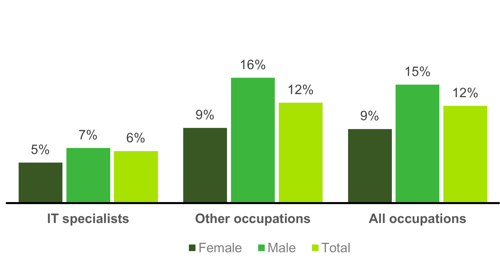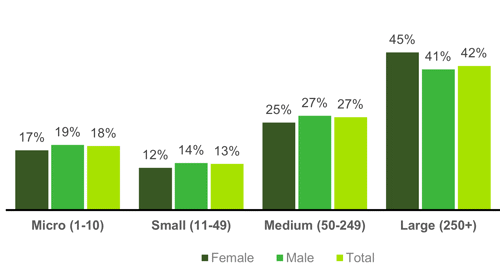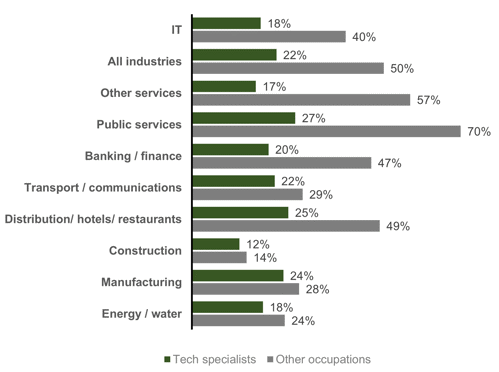Employment characteristics
Self-employment
In 2022, there were approximately 123,000 self-employed IT specialists in the UK, representing 7% of the total at that time. The incidence of self-employment amongst female IT specialists however was much lower (5%) and well below the level recorded by women in the workforce as a whole (9%).
Gender and the incidence of self-employment (2022)

Source: Analysis of ONS Quarterly Labour Force Survey by BCS
Employees and size of workplace
IT specialists working as employees are, perhaps understandably, more likely than others to be employed within larger workplaces (i.e. as micro/small sites are less likely to have an in-house function) and whilst 30% of UK employees as a whole were working in larger sites during 2022 (those with 250 or more staff), a figure of 42% was recorded for IT specialist employees.
There was some difference in the proportion of female vs male IT specialists working in large sites in 2022 – 45% compared with 41% over the year on average.
IT specialist employees by gender and size of workplace (2022)

Source: Analysis of ONS Quarterly Labour Force Survey by BCS
Industry of employment
After IT, the next largest employer of IT specialists (male or female) were Banking/Finance (19% of female IT specialists and 20% of IT specialists as a whole), and the Public sector (19% and 14% respectively).
Looking in more detail at the levels of representation for female IT specialists in different industries in 2022, it can be seen that representation was highest in the public sector, distribution/ hotels/ restaurants and manufacturing with figures of 27%, 25% and 24% respectively.
Conversely, the construction sector had the worst gender balance with regards IT specialists – where just 12% of It specialists were women.
Female employees by occupation and industry (2022)

Source: Analysis of ONS Quarterly Labour Force Survey by BCS
* Five-year average
[2]The LFS asks individuals about the number of employees at their workplace as opposed to enterprise/organization as a whole.













